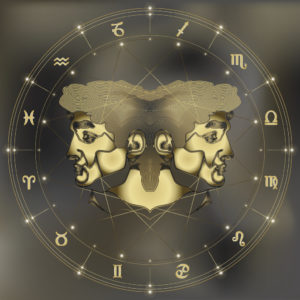January is named after the Roman god Janus. As the god of beginnings, transitions, and endings, Janus is usually depicted with two faces, one looking to the future and one to the past. To celebrate the god of this month, I will begin a new year of blogging with some reflections on the previous year.

2017 was marked by progress in preserving the history of movement analysis. Materials contributed to the National Resource Centre for Dance at the University of Surrey by Rudolf Laban’s gifted protégé, Warren Lamb, have now been preserved and catalogued. Given the time and resource intensive nature of archive work, this is a major step forward. Hopefully, the catalogue of this archive will become available online later this year.
Through similarly epic preservation efforts, the archives of movement analysis pioneer Irmgard Bartenieff are now housed, catalogued, and publicly accessible in the Special Collections of the Performing Arts Library at the University of Maryland, College Park.
In addition, the archives of Motus Humanus, an Anglo-American professional organization for Laban Movement Analysts, have also been transferred to the National Resources Centre for Dance. A partial donation of material made in 2017 will be followed by additional donations in 2018, including monies for preservation and cataloging.
And that’s not all – find out more about landmarks of 2017 in the next blogs.


 correspondence course, Rebecca Nordstrom created a sequence of basic actions and imagined this movement sequence as a scenario involving the
correspondence course, Rebecca Nordstrom created a sequence of basic actions and imagined this movement sequence as a scenario involving the 
 In his observation and analysis of thousands of business executives,
In his observation and analysis of thousands of business executives,  Shortly after I completed my Laban Movement Analysis training (1976), Warren Lamb gave a short course at the Dance Notation Bureau. I had been thinking a lot about the relationship between movement and psychology, but in vague and hypothetical ways. What Lamb presented was much more concrete — it blew me away.
Shortly after I completed my Laban Movement Analysis training (1976), Warren Lamb gave a short course at the Dance Notation Bureau. I had been thinking a lot about the relationship between movement and psychology, but in vague and hypothetical ways. What Lamb presented was much more concrete — it blew me away. In the 1940s, Rudolf Laban took his dance theories into the world of work, addressing issues of efficiency, job satisfaction, and reduction of fatigue on the factory floor.
In the 1940s, Rudolf Laban took his dance theories into the world of work, addressing issues of efficiency, job satisfaction, and reduction of fatigue on the factory floor. As the benefits of physical motion are gaining recognition and undergoing further scrutiny, it is interesting to see how Laban characterized movement health. He wrote, “A healthy human being can have complete control of his kinesphere and dynamosphere…. The essential thing is that we should neither have preference for nor avoid certain movements because of physical or psychical restrictions.”
As the benefits of physical motion are gaining recognition and undergoing further scrutiny, it is interesting to see how Laban characterized movement health. He wrote, “A healthy human being can have complete control of his kinesphere and dynamosphere…. The essential thing is that we should neither have preference for nor avoid certain movements because of physical or psychical restrictions.”
 “Groupthink” is a characteristic of overly cohesive groups. Symptoms of groupthink include overconfidence and risk taking, suppression of dissent, and collective rationalization. The old adage that “like hires like” has some truth in it. Unfortunately, any group composed of like-minded individuals is in danger of succumbing to groupthink.
“Groupthink” is a characteristic of overly cohesive groups. Symptoms of groupthink include overconfidence and risk taking, suppression of dissent, and collective rationalization. The old adage that “like hires like” has some truth in it. Unfortunately, any group composed of like-minded individuals is in danger of succumbing to groupthink.